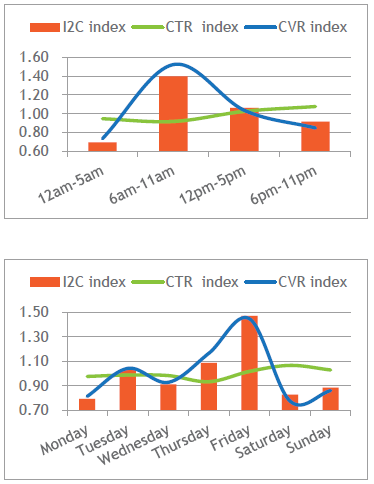This is a question I’m often asked. It’s a valid one, because after all, mobile and online are superficially similar: they’re both digital, they’re both viewed on a screen, and they’re both data-driven.
And if they could be treated the same way then, as a digital marketer, the more you can treat your advertising as a homogenous whole, the better: you can assemble your creatives, press the big button, and watch the money come rolling in, right?
However, while they share some features, mobile and online really are just close cousins. Think of advertising as a family tree: online advertising started some time ago and has settled into a steady state with certain forms dominating, while mobile is still experimenting with many shapes and sizes.
So the answer I most often give? Read on…!
Cookies
The first major difference is that, while mobile advertising does encompass mobile sites, the vast majority of it is in-app advertising – and apps don’t support cookies.
Cookies are what online advertising depends on: you could call it the advertising empire built on a cookie. First-party cookies recognise repeat visitors, while third-party cookies enable ads to ‘follow’ you around the web. Without cookies, there is no advertising in the online world.
So the principal means by which online advertising works is not available for a lot of mobile advertising. Right now there is no simple solution. Agencies need to change their mindset and start thinking about other ways of identifying users, such as device identifiers (which are not available on mobile web but are a key part of the app ecosystem), device fingerprints, and so on.
However, in the near future it could be that big data and smart algorithms point towards a solution. Today, mobile Real-time Bidding (RTB) is growing apace, and the key to RTB is data. By combining information made available by publishers, second-party data that the buyers own, and proprietary third-party data, RTB is a data-intensive way around the cookie issue that can help target and retarget audiences – and ultimately might even unify the online and mobile worlds.
Fragmentation
For the second main difference between mobile and online, just look around you now. If you’re at work, notice how the laptops and desktops are fairly similar in size, shape and performance – and that, really, the size and shape has changed very little over the years.
But during the commute home tonight, look at the mobile devices people are using. Some people will have feature phones. Others will have smartphones, from the smallest (the Modu mobile, named by the Guinness Book of World Records as the world’s lightest phone, measuring a mere 72 x 37 x 7.8 mm) through to larger devices such as the Samsung Galaxy Note or the HTC One X. Others still will have tablets, including 7-inch models and 10-inch devices. And some of them might even have the new so-called ‘phablets’ (a clumsy name, but better than ‘tablones’) which bridge the gap between the two.
As well as devices and sizes, there will be a variety of platforms. The current leaders of the pack, by quite some distance, are Android and iOS, and this is something we repeatedly see in our Global AdMetrics Reports. But there is still considerable presence from other platforms, such as RIM – or Blackberry, as it is now known – Symbian and Microsoft.
So whereas online is fairly uniform, in terms of form factors and platforms, mobile is still fragmented. What this means for digital marketers is that, while you may be able to use the same creative across a wide audience online, creatives that work well on one mobile device are unlikely to work in the same way on something much smaller or larger. Creatives may behave differently across platforms too. For example, a rich media ad – that is, one containing elements that people can interact with – may work perfectly on an iOS device but not Android.
This is why our advertising and agency clients can be surprised to find that mobile campaigns rarely go outside quite tightly focused groups. To achieve real ubiquity in mobile is to take on a considerable challenge, ensuring that your ads display at the right size, and behave in the right way.
And the answer is…
So, here’s the answer I usually give: “Why would you even want to treat mobile the same as online?”
People who use mobile have a different mindset. The IAB’s ‘Three Device Lives’ study made this evident by showing how people tended to use laptops and PCs for admin and work, while smartphones and tablets were used for news, social networking and information finding.
This makes sense. Consider how you access the web on your computer. You’re generally there to do something, whether to work, or look for information, or create. You’ll be at a desk, or with your laptop on a table or at the least on your lap. You came to the content, with a purpose.
Now think about mobile. The clue’s in the name. You’ll more than likely be on the commute or out of the home, doing something much less intense with your time. In this context, the content came to you, and you’re less focused.
So if people’s ‘head space’ is different when they’re in ‘mobile space’, then surely the advertising needs to be different too. For example, an automotive campaign could combine online advertising for awareness, with a mobile rich media campaign designed for conversion – that is, placed in apps which we know automotive people like, at times we know they’re more likely to convert. Our Automotive AdSnap showed that this is more likely to happen with mobile advertising as the week progresses, peaking on a Friday, particularly between 6am and 11am.

That’s being smarter with mobile advertising. By understanding how the two can work together, you can start to make them both work better. So next time you hear that question being asked, now you know the answer. Or, at least, the next question.






